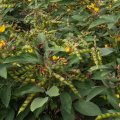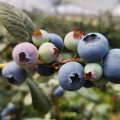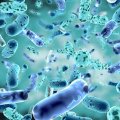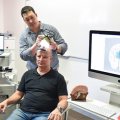The University of Queensland’s Indooroopilly Experimental Mine focuses on the maintenance of our vegetation community by eradicating threats from exotic flora and fauna.
In 2008 the site became part of Brisbane City Council’s Land for Wildlife program. Weeds have been replaced by locally occurring native species and native fauna surveys have commenced, with some outstanding results.
UQ Environmental Project Officer, Julia Blumhardt said that the habitat restoration at the UQ Experimental mine was achieving results years before they were expected.
“Trees planted just four years ago are now up to five metres tall and shading out potential weeds. This makes it easy and cheap to maintain this part of the site,” Ms Blumhardt said.
This fast growing area is part of the UQ Experimental Mine site at Indooroopilly, which is gradually being rehabilitated back to its near natural condition.
Previous UQ Environmental Officer Philip Macdonald initiated the habitat restoration in 2006 on the areas not needed for buildings, car parks and other infrastructure (see UQ News 2/04/08).
Since then, the site has changed dramatically for the better. Weed trees such as Chinese Elm, Camphor Laurel and Jacaranda are gradually being removed and replaced with more desirable native species.
Ms Blumhardt said that other weeds such as Lantana and Ochna were being treated in mosaic patches and revegetated to reduce further weed invasion so as to not disadvantage native animals that currently use the bushes for habitat.
“We are already seeing a lot of birds as well as a family of Squirrel Gliders using the gully area, which has been revegetated as a safe corridor for them to travel.”
Helping Julia with weed control are biological control agents that have been released to help with the control of two of the most invasive vines within South-East Queensland.
To bring back the native bush, Julia and her environmental management team have planted over 200 species of native plants in this area.
Ms Blumhardt said that the benefits of the University’s restoration program has meant that over 160 species of native animal have been sighted on the property.
“One species that is now a surprisingly common visitor to the recently constructed frog pond is the Tusked Frog, which is a threatened species under the Nature Conservation Act 1992. Another welcome surprise recently was the sighting of an Echidna foraging in the undergrowth of the revegetated gully,” she said.
The Richmond Birdwing Conservation Network (RBCN) and Conservation Volunteers Australia (CVA) have also become involved in the site restoration.
.jpg)











